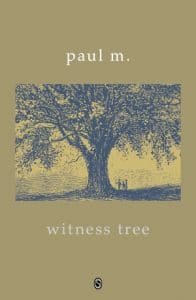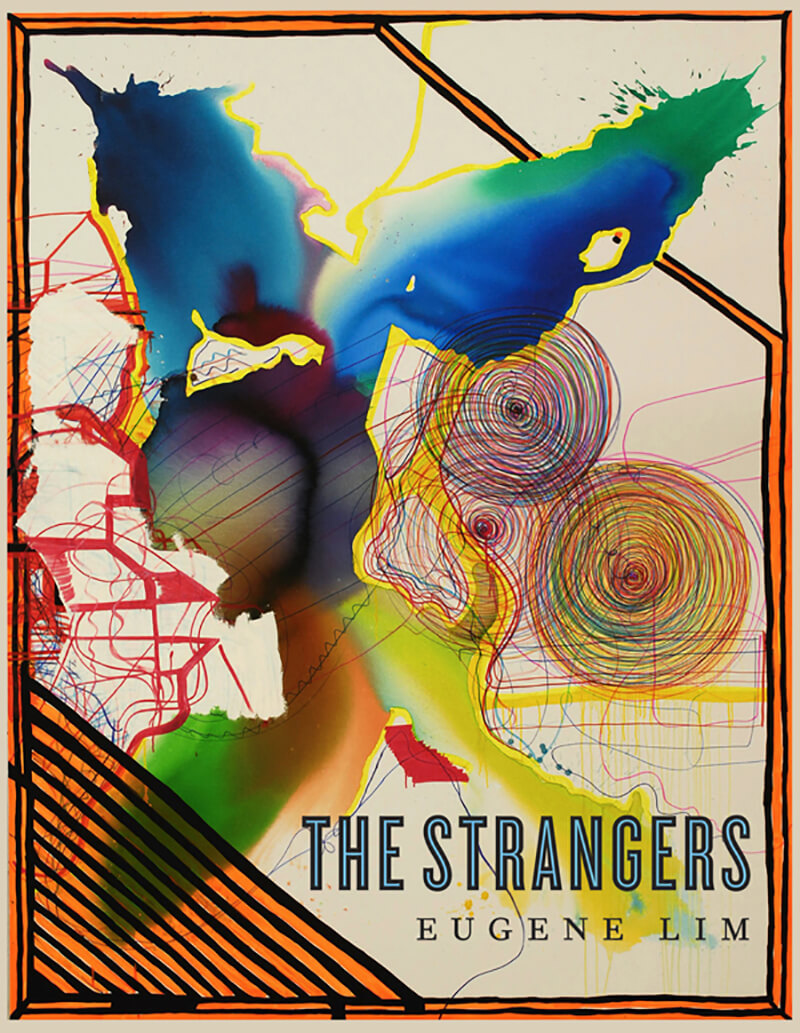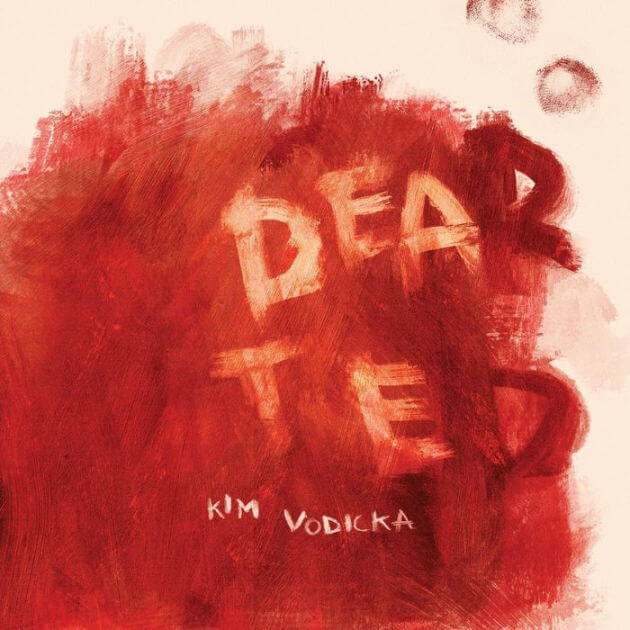witness tree
by paul m.
Review by Wally Swist
“before daylight touches the hill the backs of the wild geese:”
If the spiritual maxim about finding what is large in what is small and what is small in what is large can be applied to paul m.’s new book of haiku, witness tree, then “The Big Elm” in the “Agawam Meadows” serves as a metaphor not only for what is perhaps most significant regarding not only m.’s haiku but the art of haiku itself. m.’s literary pseudonym is “paul m.,” and it has occurred to this reviewer that it is chosen under the auspices of the author choosing to diminish the egoic nature that is sometimes found in the work of contemporary haiku poets, and further, to more specifically aim for an elementally zen element in his approach to haiku, which is, indeed, apparent in the work—all of which can be taken in the positive light of apt practice.
witness tree is an accomplished book of haiku, and it is in keeping that it is published by Snapshot Press. Furthermore, it is edited by John Barlow, who is not only a keen designer (what other press that is known for publishing haiku acknowledges the type font, such as the Palatino in this book) but also an impeccable editor, especially in formatting the sequence of the poems in a collection of haiku that then results in bringing the entire resonance and timbre of the work up to an exponentially higher level. Snapshot Press is the Scribner’s for haiku poets and John Barlow is our Max Perkins.
m.’s haiku are nearly preternaturally surprising. They take turns that a reader doesn’t quite expect. Trained in psychology, m. writes haiku that don’t necessarily have a psychological basis or effect but his haiku often result in a certain psychological nuance, such as with the one-line haiku that opens the book.
before daylight touches the hill the backs of the wild geese
This doesn’t diminish m.’s aesthetic success as a haiku poet who writes haiku whose focus is often the natural world—an apparent dwindling practice—and even mentions the late Robert Spiess twice in his introduction to this book, who preceded him as editor of Modern Haiku, and who was the spiritual father of North American haiku for decades before his death in 2002. The haiku of Spiess is deeply rooted in nature. So is m.’s, or it often is. However, m. exhibits an uncanny ability to echo John Wills, with the immemorial image, or the apt juxtapositions of images which can result in revealing the perpetuity and perspicacity of the ah moment.
| returning comet— movement within a vernal pool |
sunlight fills the millstone’s furrows a pine warbler’s trill |
| day moon the slow stream pillows against a boulder |
rain collects in a downspout barrel autumn loneliness |
m. has openly declared his working in longer forms of poetry before his commitment to the haiku genre in various introductions to his books, and that sense of craft that is often instilled in writing workshops is evident in his use of the verb “pillow” in “day moon,” above. It is a masterful verb selection, and it is worth noting that m.’s haiku is surprisingly rich in poetic technique that is often enough found lacking the contemporary haiku genre overall.
A minor drawback in m.’s technique, which subverts total excellence, is a characteristic Charles Trumbull, a former editor of Modern Haiku, also critiqued in his review of m.’s 2006 book of haiku, called home (Red Moon Press). In that review in Modern Haiku, Trumbull pointed to what he saw sometimes as a lack of “interpolation” of the images in m.’s haiku. My word choice is different. I see m.’s “juxtaposition” of images as being occasionally counterintuitive—as opposed to being fluidly intuitive.
| morning moon the things I do by rote |
rain on leaves . . . his small box of concert tickets |
However in mitigating this criticism, and in attempting to understand his work more deeply, these particular haiku exhibit a kind of Hugh Prather-like element—Hugh Prather being the author of a series of books in the 1970s which propelled the art of journaling and finding oneself in that practice to where it is today. To propound this possibility is to accommodate the haiku of his that don’t consistently resonate with a nuanced silkiness and a chiseled aesthetic into a greater whole, which is what any collection of haiku or poetry attempts to do—and paul m. does accomplish just that with a worthy brightness and dignity befitting readers everywhere.
| a hard cold sculpted grooves in the deadwood of a bristlewood pine |
starfield the silence after a screech owl’s cry |

witness tree
paul m.
Snapshot Press
ISBN: 978-1-903543-51-1
About the Author

Media Credit: Matt Lin
Wally Swist has published over forty books and chapbooks of poetry and prose, including Huang Po and the Dimensions of Love (Southern Illinois University Press, 2012), selected by Yusef Komunyakaa as co-winner in the 2011 Crab Orchard Series Open Poetry Contest, and Daodejing: A New Interpretation (Lamar University Press, 2015).
His translations have been and/or will be published in Chiron Review, Ezra: An Online Journal of Translation, The RavensPerch: Adding Breadth to Words, Solace: A Magazine of Diverse Voices, Transference: A Literary Journal Featuring the Art & Process of Translation, (Western Michigan Department of Languages), and Woven Tale Press.
Recent books of poetry include A Bird Who Seems to Know Me: Poems Regarding Birds & Nature (Ex Ophidia Press, 2019), the winner of the 2018 Ex Ophidia Press Poetry Prize, The Bees of the Invisible (2019), Evanescence: Selected Poems (2020), and Awakening & Visitation (2020), with Shanti Arts. Forthcoming books include A Writer’s Statements on Beauty: New & Selected Essays & Reviews, Taking Residence, and a translation of Giuseppe Ungaretti’s L’Allegria/Cheerfulness, also with Shanti Arts.
He is also the author of Singing for Nothing: Selected Nonfiction as Literary Memoir (Operating System, 2018).



